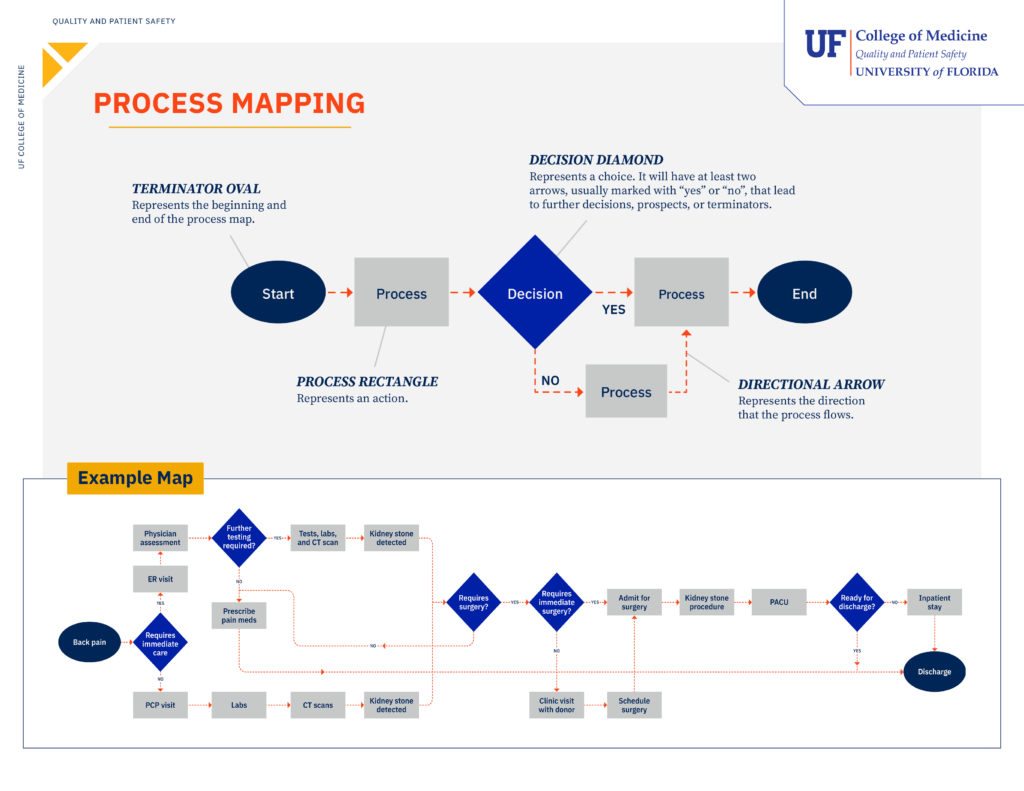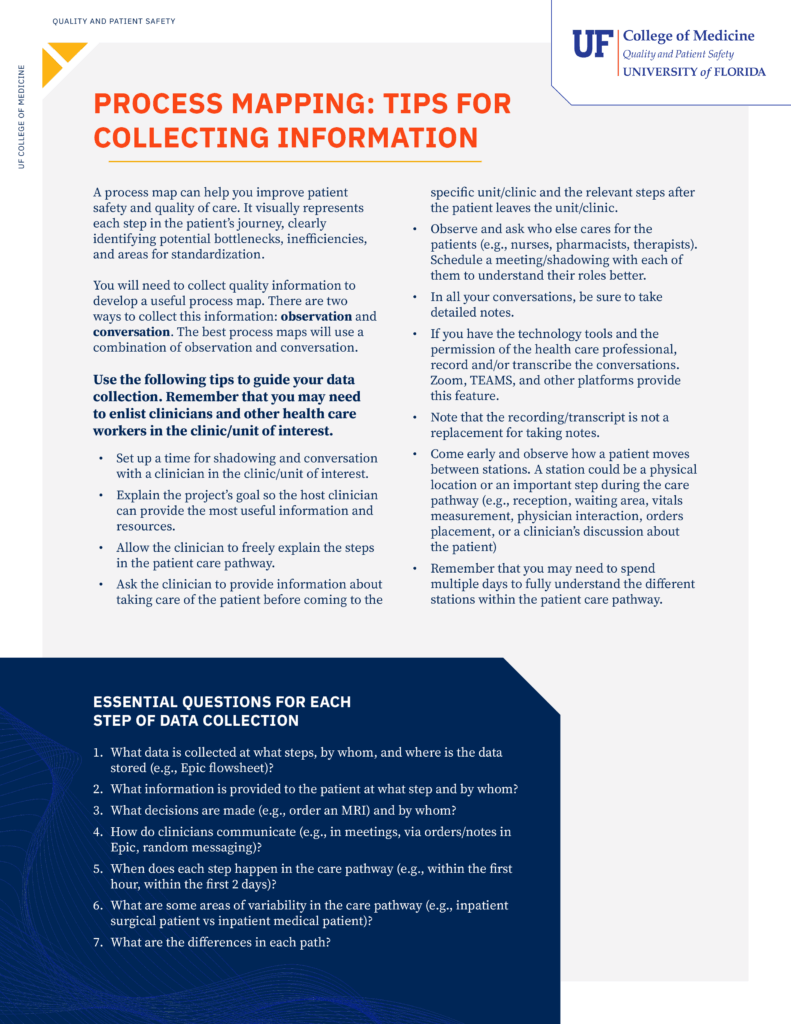What is Process Mapping?
Clinical workflows can be incredibly complex, with many handoffs, decisions, and tasks happening in a sequence that isn’t always visible to everyone involved. Process mapping is the tool that makes the invisible visible. It is a systematic way to create a flowchart of a patient’s entire journey or a specific clinical procedure, illustrating every step from beginning to end. By visualizing the workflow, teams can gain a shared understanding of how things currently work, not just how they are supposed to work.
At its core, a process map uses a standard set of symbols to represent actions, decision points, and the overall flow of the process. This simple act of charting the course uncovers opportunities for improvement that might otherwise go unnoticed. It helps to pinpoint inefficiencies, highlight areas of ambiguity, and identify bottlenecks that delay care. Whether you are starting with a pen and sticky notes to map a simple task or using software to create a detailed diagram with multiple stakeholders, the goal is the same: to create a foundation for more streamlined, reliable, and safer patient care.
This page provides the resources to guide you from the basic principles of process mapping to more advanced techniques. By learning to map clinical processes, you can equip yourself with a powerful tool to drive meaningful improvements in your practice.
Resources
The videos and handouts below offer a step-by-step introduction to process mapping. They will guide you from understanding the basic concepts and building your first map to gathering data for complex projects and using advanced diagramming techniques.
Introducing Process Mapping
Understand the fundamentals of process mapping and how it helps visualize a patient’s journey. This video introduces the basic symbols used in a process map and explains how this tool can streamline workflows, reduce errors, and improve healthcare outcomes.
Designing a Simple Process Map
Learn how to build your first simple process map using a step-by-step example of checking a patient’s temperature. This guide covers the essential symbols for processes and decisions, helping you create a basic diagram to identify inefficiencies and opportunities for improvement.
Process Mapping Explained

Learn the standard format used for creating process maps with this easy reference chart. This fillable handout provides space and a key for you to draft your first process map. It also includes an example process map to help you understand the process of laying out your own.
Collecting Information for Process Maps
Discover key methods for collecting the detailed information needed for a comprehensive process map. This video outlines how to use direct observation and stakeholder interviews, and provides five essential questions to guide your investigation and ensure a thorough understanding of the process.
Use this handout to remind you of key steps in collecting information for a process map. The handout also includes essential questions for the steps of data collection.
Helpful Advice for Collecting Data for Process Mapping
This handout includes:
- Tips for data collection
- Essential questions for planning data collection
Adding Swim Lanes to a Process Map
Explore advanced process mapping using swim lane diagrams to clarify roles and responsibilities within a complex workflow. This video explains how to create lanes for different stakeholders—like patients, clinicians, and systems—to visualize their interactions and improve communication.


